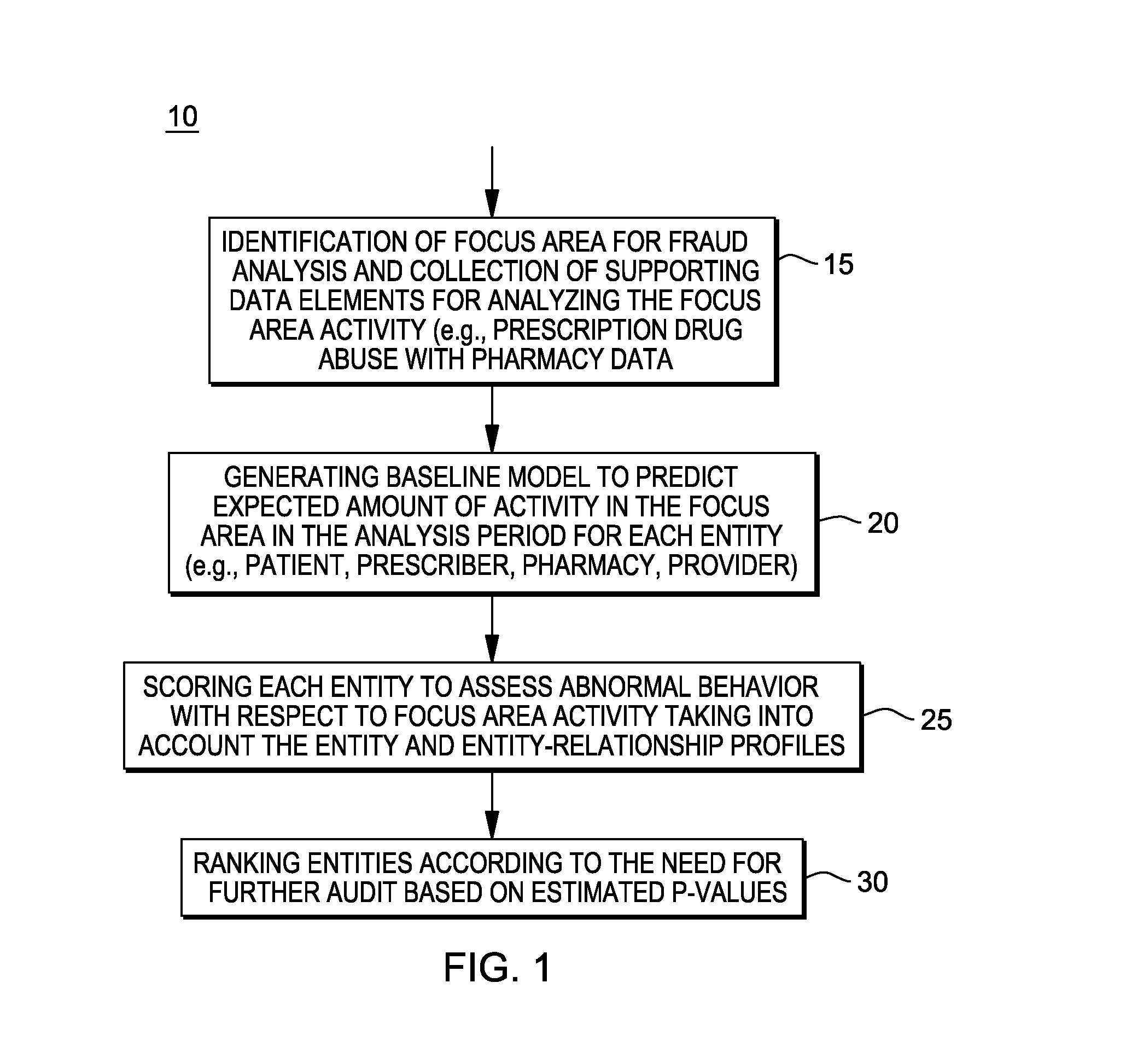Identifying potential audit targets in fraud and abuse investigations
a fraud and abuse investigation and target identification technology, applied in the field of computer-aided auditing and investigating, can solve the problems of affecting the utility of the computer-aided audit process, unable to adequately incorporate the relevant domain knowledge and data modeling expertise, and many limitations in the approach
- Summary
- Abstract
- Description
- Claims
- Application Information
AI Technical Summary
Benefits of technology
Problems solved by technology
Method used
Image
Examples
Embodiment Construction
[0021]A system, method and computer program product for detecting fraud in the health care industry, particularly for conducting an audit in prescription drug claims.
[0022]In particular, a computer-aided audit technique for detecting fraud in the health care industry may be part of a preliminary screening process to identify a smaller set of targets for detailed investigation and prosecution.
[0023]The computer-aided audit technique is credible and effective as the potential audit targets are provided with high selectivity. In one aspect, these targets may be ranked in some order that emphasizes the severity of the departure from expected audit norms, and if the results are supported by a deep-dive analysis, that provides the background evidence for investigating the top-ranked audit targets. The high selectivity in the implemented method for identifying potential audit targets ensures that the number of false positives (in the top-ranked targets) and false negatives (in the bottom-r...
PUM
 Login to View More
Login to View More Abstract
Description
Claims
Application Information
 Login to View More
Login to View More - R&D
- Intellectual Property
- Life Sciences
- Materials
- Tech Scout
- Unparalleled Data Quality
- Higher Quality Content
- 60% Fewer Hallucinations
Browse by: Latest US Patents, China's latest patents, Technical Efficacy Thesaurus, Application Domain, Technology Topic, Popular Technical Reports.
© 2025 PatSnap. All rights reserved.Legal|Privacy policy|Modern Slavery Act Transparency Statement|Sitemap|About US| Contact US: help@patsnap.com



